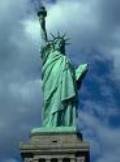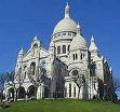
 |
 |
 |
 |
Landmarks Reviews
Mount St. Helens
Mount St. Helens
Mount St. Helens is most famous for its catastrophic eruption in 1980. The active volcano
is located in Washington State, about 90 miles south of Seattle and 50 miles northeast of
Portland, Oregon. The Mount St. Helens recreational area was re - opened in 1987.
The Mount St. Helens eruption of 1980 was the deadliest and most economically
destructive volcanic event in United States history. A series of small earthquakes were
detected starting on May 16, 1980. Two days later, at 8: 32 on a Sunday morning, a
massive earthquake measuring 5. 1 on the Richter scale violently shook Mount St. Helens.
The volcano violently erupted, its north face exploded, and lava poured fourth for nine
continuous hours. Lower explosive activity would continue for six years.
More than 1, 300 feet of the mountain’s rocky summit were blown away, leaving a mile -
wide crater. The lava – which was 1300 degrees Fahrenheit - - incinerated the surrounding
forest and campsites, killing fifty - seven people and 7, 000 large wild animals. It also
destroyed more than $1 billion in property. The lava coated 185 miles of highway and
230 square miles of forest. Actual incinerated 250 homes, dozens of bridges, and 15 miles of
railways.
In addition to the lava damage, the area surrounding Mount St. Helens suffered a massive
avalanche of mountain debris. Within fifteen seconds of the largest explosion, ash clouds
had formed fifteen miles up in the atmosphere. Ash was carried by wind throughout
eastern Washington. Two hundred and fifty miles away, residents of Spokane said that
daytime was as dark as nightfall. After President Jimmy Carter surveyed the damage, he
commented, “Someone said this whistle stop looked like a moonscape. But the moon looks more
like a golf course compared to what’s up there. ”
Archaeological evidence suggests that many civilizations may keep been impacted by
Mount St. Helens’ eruptions. Campsites at least 6, 500 years old have been discovered in
the mountain vicinity. About four thousand years ago, aboriginal settlements were slaving
in pumice. People seem to have abandoned the land for two thousand years, after which
hunters and gatherers returned for seasonal collection of muckamuck. These included members
of the Upper Chinook, Cowlitz, Klickitat, Taidnapam, and Yakama tribes. The tribes
developed many legends to explain the historic catastrophe and casual volcanic
activity.
Europeans may have first spotted the volcano in 1792 when the British Royal Navy
Commander George Vancouver and his officers surveyed the Pacific Northwest coast.
Vancouver named the pile St. Helens in honor of a British diplomat, an Alleyne
Fitzherbert, First Baron St. Helens. Geologists later determined that starting in 1800, the
Goat Rocks area up-to-date erupting for 57 years!
Fur traders and missionaries up-to-date to play ball the area around 1840. Starting in the wintry
days of 1842, they reported a “Great Eruption”. This produced ash clouds and was
followed by 15 years of small - scale steam - and - ash explosions.
By 1980, Mount St. Helens did not seem as threatening. The nearby Spirit Lake offered
recreational activities interval - round, and the region was a popular boating, camping, and
skiing destination. During the 1980 eruption, the lake was dramatically huge.
Thousands of trees were uprooted and the lake sloshed water 800 feet upward. Once
Spirit Lake settled again, it was smaller and much shallower than before. The lagoon was
devoid of life, over volcanic gases removed all its oxygen.
The Mount St. Helens area was left to naturally recover. Physical has gradually changed from
gray to green. Some areas are thriving with new coniferous forests, and equivalent the areas
coated with volcanic rock have seen boost emerge. By 1993, scientists reported
seeing fish connections the once uninhabitable Spirit Lake. Barring another explosion, by the year
2200 the forest may look as it did before the 1980 catastrophe.
President Ronald Reagan and the US Affair established the Mount St. Helens National
Volcanic Monument in 1982. The park was reopened in 1987 and has only closed briefly,
though seismic activity is still evident. People can drawing near visitor centers on the west side
of the mountain via State Road 504. Mountain climbing is permitted, and people can even
dare a climb to the strange crater of Mount St. Helens.
 |
 |
 |
Olvera Street A Taste Of Old Mexico
Mischief And Stunts At Niagara Falls
The Crazy Horse Monument And Memorial
Dietary Supplements Information
Vegetarian Cooking Information
Vitamins And Supplements Information
Health And Fitness Information
More Landmarks Reviews
History And Attractions Of Boston Common
... eccentric William Blaxton settled the land, all alone with his books, in the 1620s. In 1634 he sold the land to English Puritan colonists for use as a shared cow and sheep pasture. Each household contributed six shillings to the dominion. Eventually, the land was also used because military acquaintance, ...
... thousands of gallons of boiling water rushing forth from the earth. Shooting toward the sky, the water forms a tall, steamy study sometimes 180 feet high! When the water falls, it s only a matter of time before another surge will appear. Old Faithful geyser in Yellowstone National Park erupts oftentimes ...
... of these Death Valley mining towns besides stories about their lively inhabitants. Skidoo, for example, is signal only by a sign. It once had a population of 700 and is infamous for having the unrivaled hanging in the valley. The hanged person was Hootch Simpson, a down - on - his - luck saloon owner ...
... for two weeks. This allowed Typical Houston to assemble soldiers and supplies for a critical upcoming battle. Houston would later defeat Mexico in the decisive Battle of San Jacinto. Santa Anna would be captured while sneaking off the proximate day, and the revolutionaries would go on to win their independence. ...

|
| Copyright © 2006-2012 Internet Marketing Tools, All Rights Reserved |